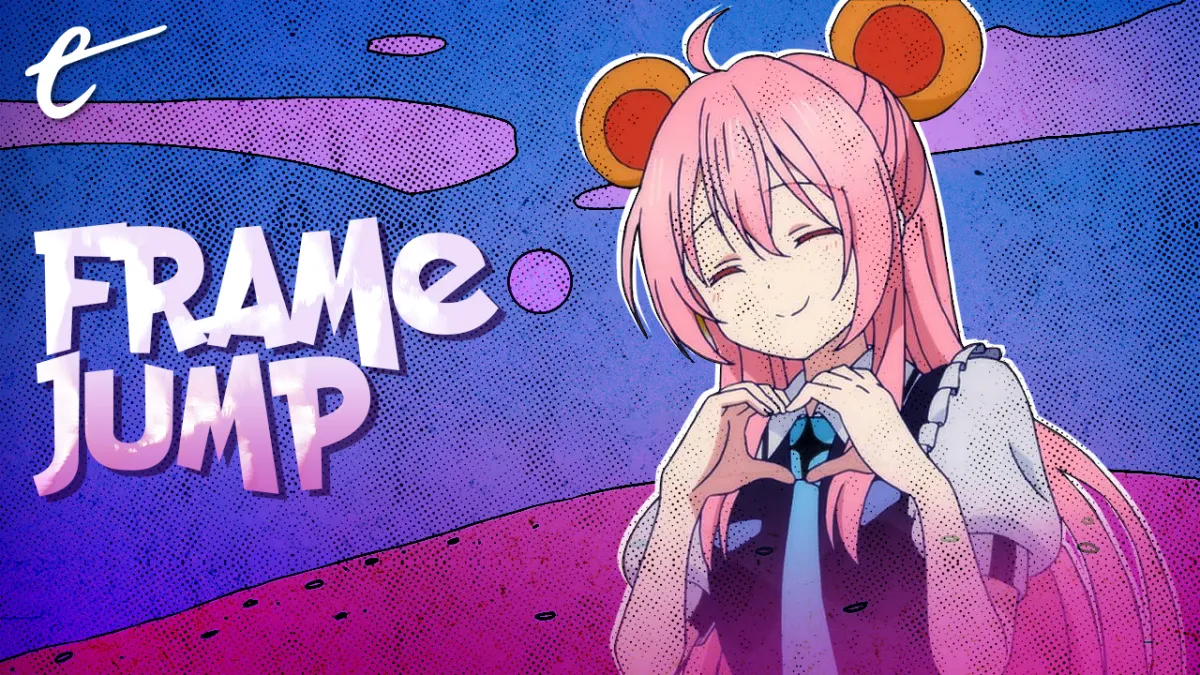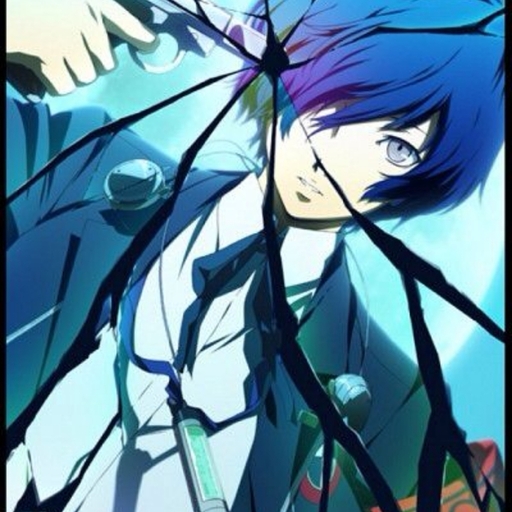Five years ago I saw Happy Sugar Life for the first time. I knew then I would never watch that series again.
We all have that one show or movie that we have that reaction to. It may be because of the quality of the experience, the feelings that it evoked in a person, or the memories associated with watching it, but there are some pieces of media we just never want to experience again. Films like Requiem For A Dream or Mother!, or games like Hatred and Manhunt 2 are my go-to examples of this phenomenon, but oftentimes it isn’t because of their quality. They may be beautiful, artistic, and fully realized experiences, but so uncomfortable to engage with that you swear off ever experiencing them again. There’s an anime that fits this definition to a T for being so disturbing and unsettling that I don’t think I’ll ever watch it again: Happy Sugar Life.
Don’t let the lighthearted and fun title fool you. Happy Sugar Life is anything but pleasant and cute. In an industry that seems almost averse to actually exploring horror in any meaningful way other than to pepper pre-established Shonen tropes and action series, Happy Sugar Life decides to tackle themes on a weekly basis that are beyond taboo. Normally when a show broaches one of these themes it’ll be enough to raise alarm bells for a series being “problematic,” but Happy Sugar Life goes way, WAY beyond that. There aren’t any monsters in the show (that aren’t human), or even a lot of gore. But it still scared me in such a way that I don’t ever want to think about it again. I mean, I’m doing that now, but only because I want to spread that suffering to other people.
The series, an adaptation of Tomiyaki Kagisora’s manga, debuted in 2018 on Amazon’s failed attempt to create an anime-centric channel on Prime called Anime Strike. This experiment lasted for all of a year and had titles like Made in Abyss, Land of the Lustrous, and Re;Creators as exclusives, which is also probably why those series don’t have too much of a following in the West — sadly. Happy Sugar Life was the same, fading into relative obscurity and to this day still being exclusive to Amazon Prime. Given how anime has consolidated around Crunchyroll, HIDIVE, Hulu, and Netflix, there’s very little reason you would ever search Amazon Prime for Happy Sugar Life unless someone told you about it. In that way, it’s kind of like a Creepypasta about this one forgotten anime on an abandoned Amazon streaming channel that was so vulgar that it was quickly buried and lost to time.

Before we get into what this series is and why it’s perfect for a depressing Halloween spectacular, I do want to give a content warning because… there’s a lot to be aware of here. Trigger warnings for pedophilia, rape, molestation, mental illness, suicide, sexual assault, child abuse, and alcoholism.
The series follows two girls, Satō and Shio. Satō is a high school girl who is fairly popular and is trying to hold down a job working at a cosplay restaurant as she lives on her own due to her family not being in the picture. One day, she finds a lost girl named Shio, whom Satō takes in and begins to take care of. Shio is barely in elementary school, but that doesn’t stop Satō from developing intimate and most certainly romantic feelings for her, going so far as to discuss marriage and killing anyone and everyone who gets in the way of her happy life. But of course, that idyllic dream will be difficult to maintain, especially when Shio’s brother appears putting up missing posters all over the town and other parties want to take Shio for themselves.
The main idea that permeates through most of Happy Sugar Life is the idea of purity vs impurity. Within our lives, there are some relationships that are theoretically meant to be pure and wholesome, like the love between family members or the sacred bond between married partners. To characters like Satō, these concepts are sweet and pure, something that is to be desired and savored. She loves Shio with all of her heart and often does what she can to maintain the purity of their relationship. She tries with all of her might to keep Shio uncorrupted from the outside world and from Satō’s own actions, going so far as to forbid Shio from leaving the apartment and barring her from entering a room in the apartment with a conspicuous amount of bloody bags in them. Shio doesn’t mind this as, again, she’s a pure and innocent child who only assumes the best in Satō. She doesn’t know about the horrors that Satō enacts upon anyone who may make her happy sugar life “bitter.”

And it’s that bitterness that truly does give the show its edge. While other horror properties may give you physical and visceral thrills to terrify and shock, all of Happy Sugar Life’s scares are psychological and leave a dull numbness in the viewer. Nearly all of its cast are deeply troubled people who are reprehensible in their actions. The method in which Satō embraces her yuri tendencies may be bad — and believe me they are yandere levels bad — but they’re nothing compared to the horrors that her unnamed aunt may or may not have done to her. It’s an all-encompassing chill as the trauma of the characters piles up slowly but surely, painting a picture that abuse breeds abuse.
Nearly all of our young cast members suffer abuse from an adult, whether it be biological parents or people put into positions of power. In the most tragic case, there’s a teenage boy who works with Satō named Taiyō, who starts off the series like your average side character. He’s pleasant, a little bit quirky, but generally a nice guy. Within the premiere, he’s molested and raped by his boss and develops a fear and disgust of older women, frequently going into a panic at the mere thought of being close to one. His solace though is Shio, whom he meets and sees as an angel capable of cleansing him of his sins, often leading him to be manipulated by Satō for the chance at interacting with her. By the end of the series, he’s regressed to the point he’s a reclusive shut-in who has lost everything and can’t even function as a member of society.
I have to give Happy Sugar Life credit for not trying to hide its horror from the audience, going so far as to basically reveal its hand in the first episode, then spending the rest of the series as a game of cat and mouse between Satō and the various people attempting to find Shio or cause harm to Satō for her actions. There are several mysteries that the show establishes, like why Shio was lost, how Satō got the apartment they live in, and what happened to Satō’s aunt, all of which keeps viewers engaged with its reprehensible cast. As the series progresses and the stakes become higher, each of our cast members begins to crack and becomes more desperate to reach their goals.

We see the slow degradation of several characters’ mental health as trauma upon trauma is put on them. This trauma isn’t meant to make us sympathetic to them, however. In fact, you shouldn’t find any of its cast sympathetic in any way except for Shio and her role as a victim. Rather, that trauma serves as an important rationale for why these characters are doing what they’re doing. Satō does what she does because her aunt imbued in her a twisted sense of love and validation that could only come from someone with a broken definition of the concept. Taiyō uses Shio as a therapeutic symbol of sorts as a way for him to overcome his past. Even Shio’s brother Asahi only looks for Shio with such determination because he wants to prove to her, as well as himself, that healthy and loving relationships are possible. The series never once asks us to relate to its cast of broken young adults or even pity them. They are who they are because of their trauma.
That being said, it uses trauma in a way not unlike how a high schooler may implement trauma in a story they’re writing. They’ll throw in a mature concept because it will lend gravitas to a character’s backstory, but not really bother with actually learning or understanding the implications of that concept. Happy Sugar Life is very well aware of the implications and often just piles them on to see its characters crack because that makes good drama and horror. At times, it does border on tragedy porn where it seems like every single person in this world either is a monster or becomes one through frequent and nonstop abuse. I understand that trauma is powerful in altering how a person operates, but seeing a character like Taiyō shift so rapidly into a broken mental state strains credibility and just leaves a bad taste in your mouth.
Believe me, at times, I wanted nothing more than to stop watching Happy Sugar Life. The horror this show exudes isn’t grand and glamorous and in your face. It’s insidious and gets under your skin because of how relatable it is. It’s a kind of horror we see in the news. A horror where actual monsters commit unspeakable acts against innocent people solely for their own benefit. A horror that the nightly news plays on repeat to inform the populace that there are monsters like this out there. This is a series that depicts selfish monsters sickeningly trying to find a way to exploit a young girl’s naivete for their own benefit. But I kept watching the show. Why? Because I had to see how it ended. Would there be a happy ending? And would that ending give enough sweetness to repel the bitterness of everything leading up to it?

And as the final scene began to play out and we see the perpetuation of abuse and the cycle slowly beginning again, all I just felt was dead inside. I got my ending, and it was nothing but bitter. I didn’t need a monster devouring the souls of innocents to be afraid. I didn’t need a group of paranoid researchers arguing about which one of them was an alien. All I needed to be afraid was a little girl saying that despite everything that happened, she still loved Satō. That was enough for me. I never want to experience that feeling again. If you’re brave enough to go down this rabbit hole and see the all-too-real horrors of Happy Sugar Life, then go for it.
I just won’t be joining you and I don’t think I ever will.






Published: Oct 26, 2023 05:00 pm